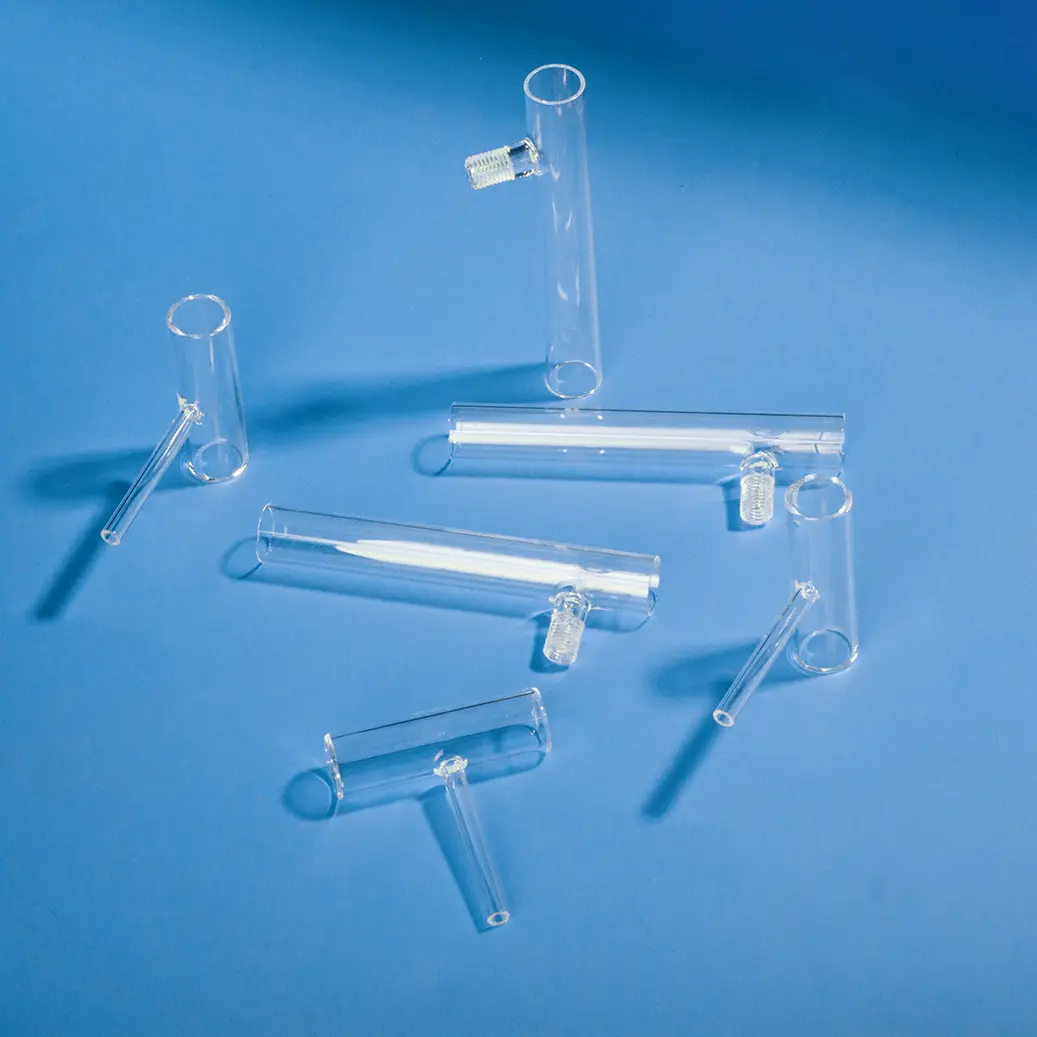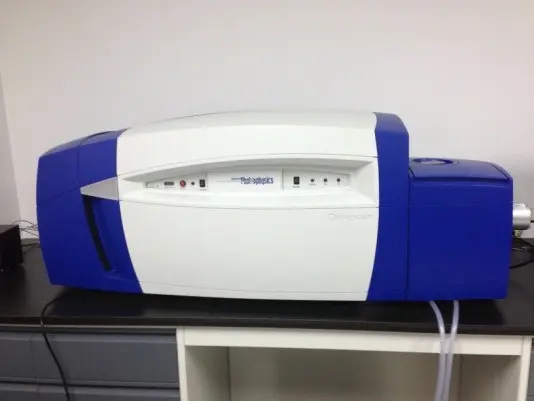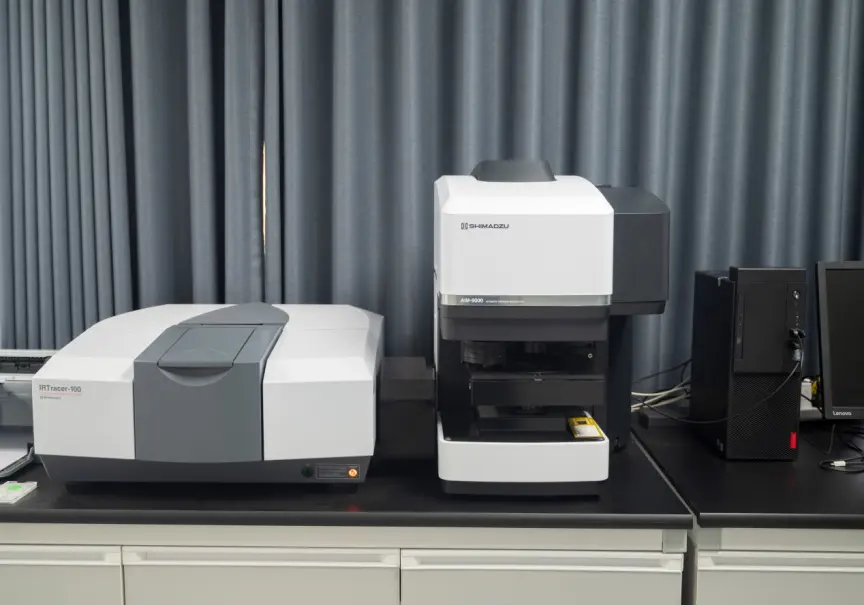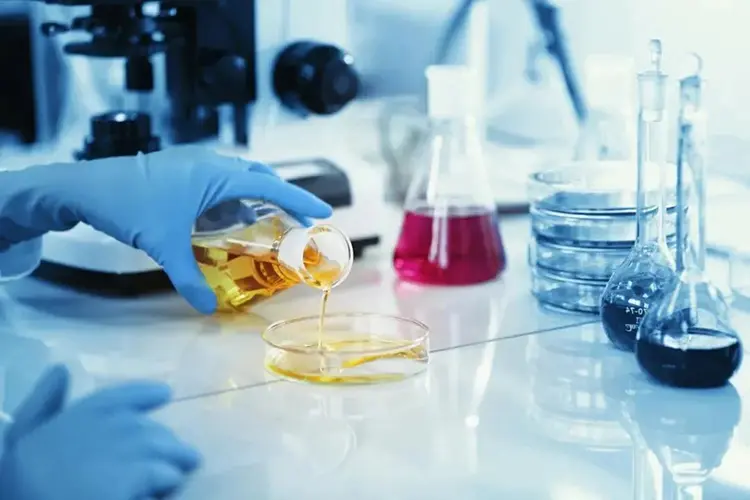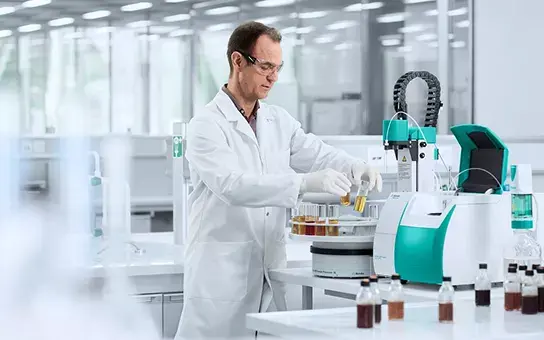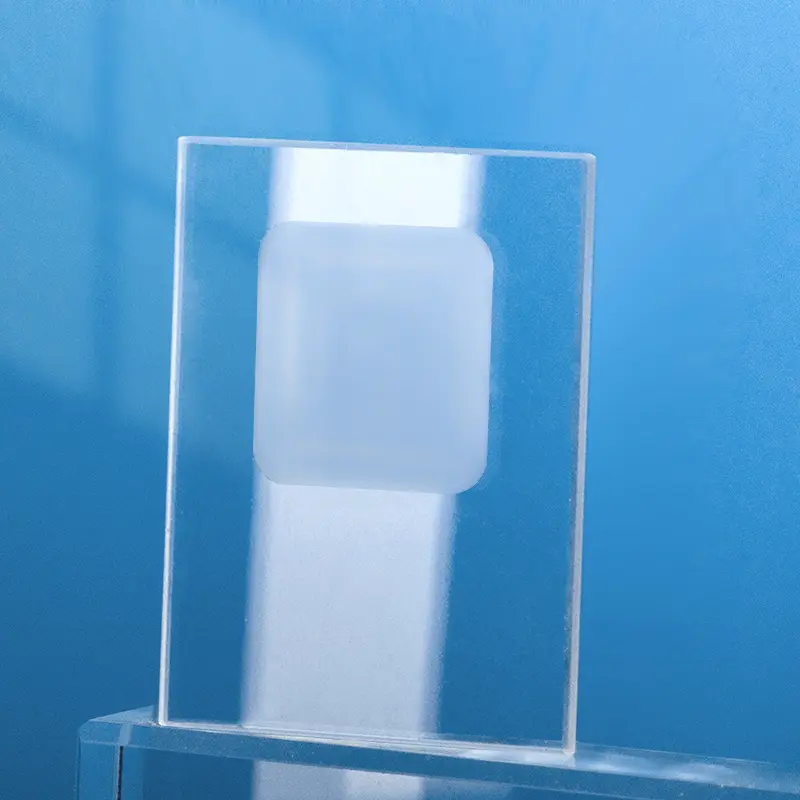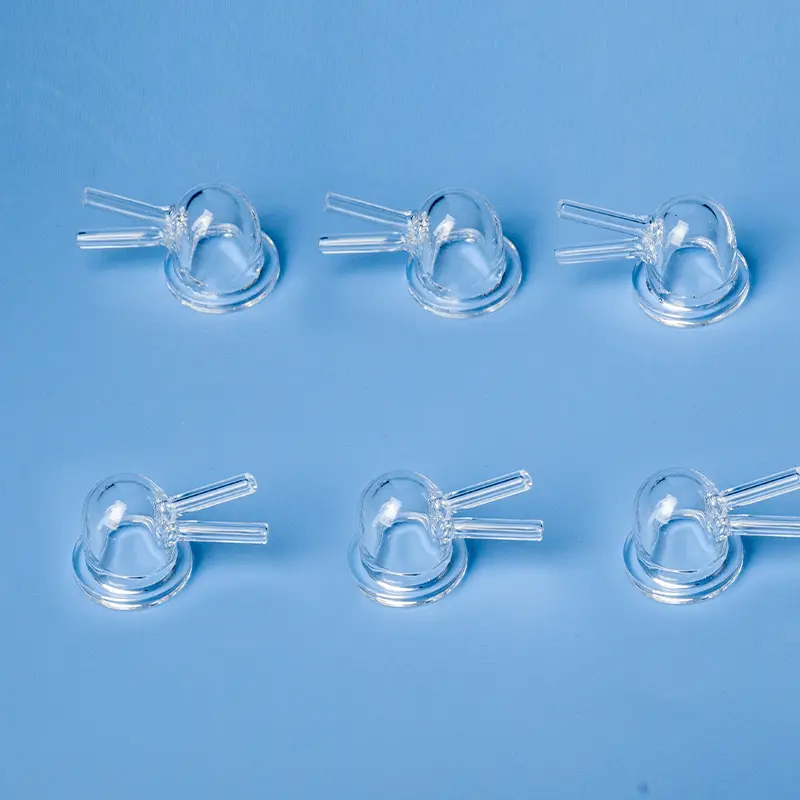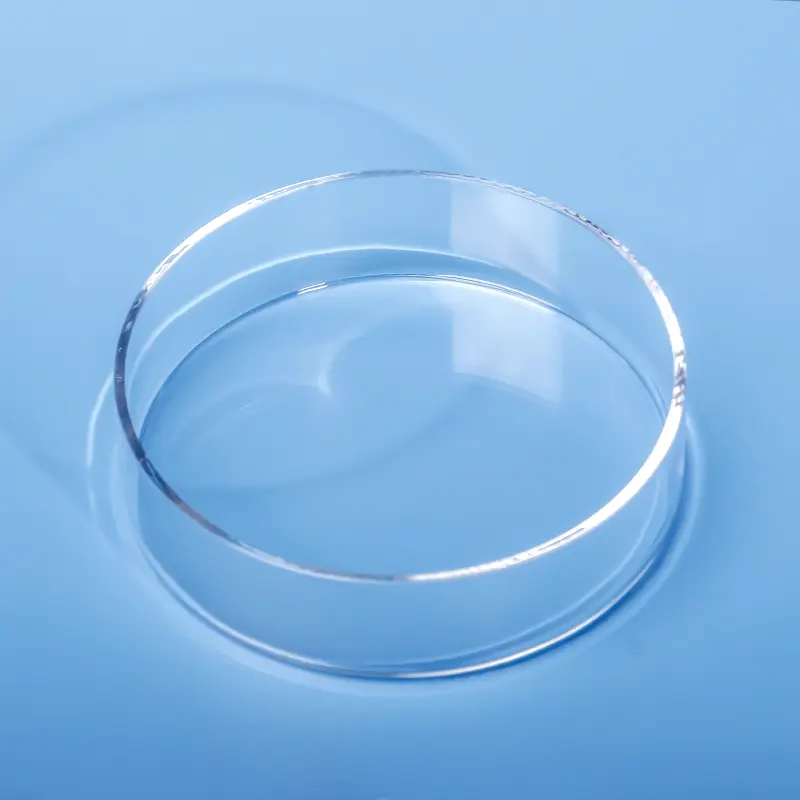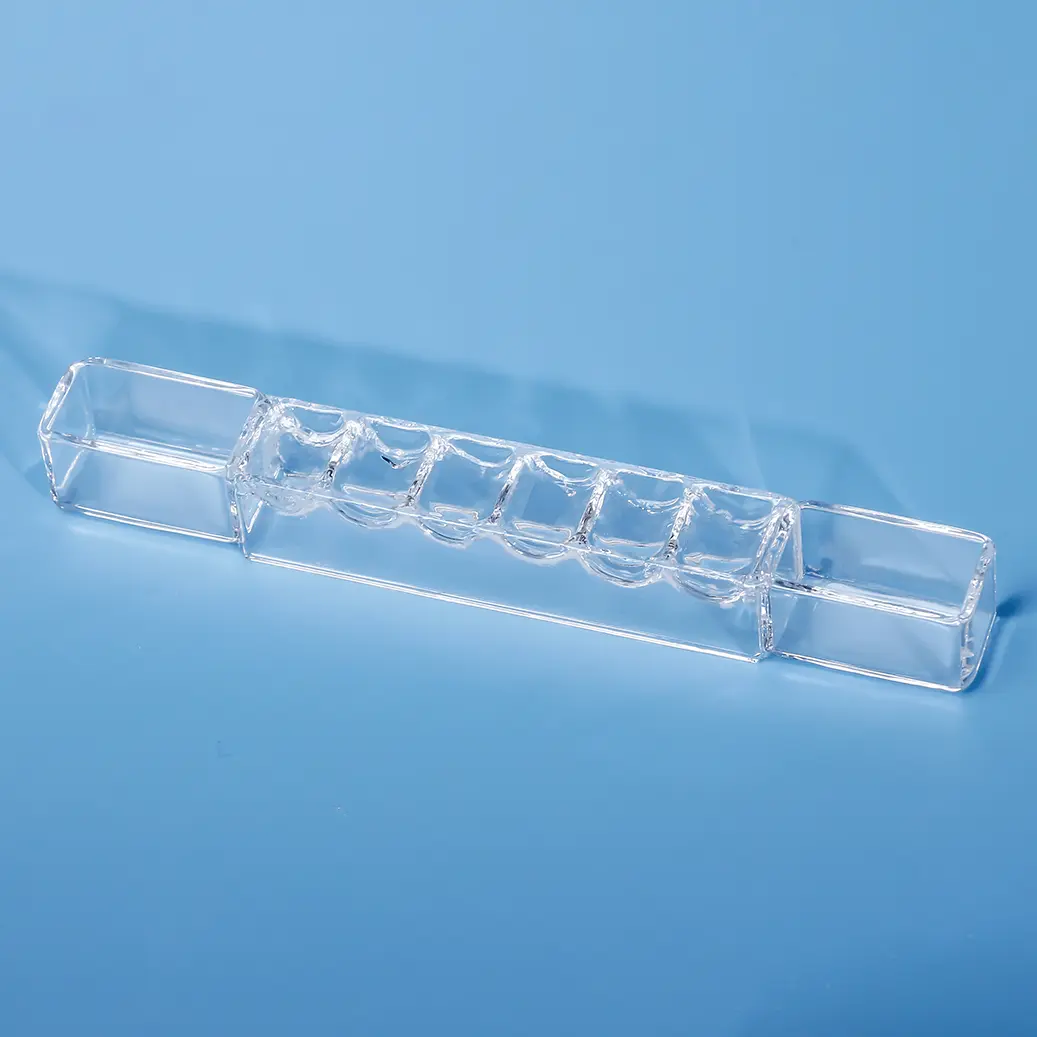Our custom quartz reaction tubes and fused silica side arm tubing are precision-engineered for specialized chemical processes and laboratory applications. Crafted from high-purity fused silica, these components offer exceptional chemical resistance, high thermal stability, and excellent UV-Vis light transmission. Designed with various angles and ports for complex fluid or gas handling, we provide bespoke solutions to meet your precise experimental or industrial requirements.
| Property Content | Property Values |
|---|---|
| SiO2 | 99.99% |
| Density | 2.2×10³ kg/cm³ |
| Hardness | 5.5 - 6.5 Mohs' Scale 570 KHN 100 |
| Tensile Strength | 4.8×10⁷ Pa (N/mm2) (7000 psi) |
| Compression Strength | >1.1×10⁹ Pa (160,000 psi) |
| Coefficient of Thermal Expansion | 5.5×10⁻⁷ cm/cm·°C (20°C-320°C) |
| Thermal Conductivity | 1.4 W/m·°C |
| Specific Heat | 670 J/kg·°C |
| Softening Point | 1730°C (3146°F) |
| Annealing Point | 1210°C (2210°F) |
| Strain Point | 1120°C (2048°F) |
| Work Temperature | 1200°C (2192°F) |
| Electrical Resistivity | 7×10⁷ ohm cm (350°C) |
| Size | Customized |
| Logo | Customized Logo Accept |
High Light Transmittance
The quartz material offers high light transmittance in the ultraviolet to visible light regions, which is essential for spectroscopic analyses requiring precise measurements within these wavelength ranges.
High-Temperature and Chemical Corrosion Resistance
Quartz cuvettes are able to withstand high temperatures and exhibit good resistance to most chemical reagents, allowing them to maintain performance even under harsh experimental conditions.
Screw-Top Design
The screw-top design allows for sealing of the cuvettes, reducing sample evaporation and contamination. It also facilitates secure mounting of the cuvettes on spectrophotometers, ensuring the stability of measurements.
Orientation Considerations
Quartz round screw-top cuvettes may have an orientation, and proper placement according to the specific model and markings is necessary to minimize measurement errors and ensure the accuracy of experimental results.
Application Scenario
The high light transmittance of quartz cylindrical cuvettes in the ultraviolet region is essential for experiments requiring precise measurements in this wavelength range. Many biomolecules and chemical substances have characteristic absorptions in the ultraviolet region, which are crucial for their quantitative analysis and identification.
When using quartz cuvettes, avoid touching the optical surfaces to prevent contamination. Thoroughly clean and properly store them before and after use to maintain their performance. Also, because quartz material is fragile, handle with care to prevent damage.
When cleaning quartz cuvettes, gently wipe with a mild detergent and a soft cloth, avoiding hard brushes or abrasives that could scratch the surface. After cleaning, thoroughly rinse and air-dry or wipe with a lint-free cloth. For long-term storage, store them in a suitable cuvette box, avoiding direct sunlight and high-temperature environments to extend their lifespan.
Frequently asked questions
We specialize in the end-to-end manufacturing of high-purity quartz glass components. Our core product lines include:
Quartz Tubing & Rods: A wide range of diameters and specifications.
Quartz Plates & Discs: Precision-cut and polished for optical and industrial use.
Quartz Labware: A full suite of standard and custom glassware, including beakers, flasks, and boats.
Semiconductor-Grade Quartz: High-purity components like process tubes and carriers for semiconductor fabrication.
Custom Fabricated Components: We can produce complex parts tailored to your unique designs and specifications.
Yes. Custom fabrication is at the core of our business. With over a decade of specialized experience, we partner with companies to provide expert OEM/ODM services. Our capabilities include welding, grinding, drilling, polishing, bending, and other precision processing techniques to create components that meet your exact requirements.
Quality is paramount in our manufacturing process. We are an ISO 9001:2015 certified manufacturer, ensuring that our processes meet international quality management standards.Our products also undergo rigorous SGS testing for purity and performance. We use high-purity raw materials (up to 99.998% SiO2) to produce fused quartz and fused silica products with exceptional thermal stability, high-temperature resistance, and chemical inertness.
We've streamlined our process to be as efficient as possible:
Submit Your RFQ: Send us your technical drawings, specifications, and requirements via our website contact form or email.
Rapid Response: You can expect an initial response within minutes and detailed communication within half an hour.
Design & Proposal: We will deliver a detailed design proposal and a competitive quote within 24 hours.
Prototyping & Production: Upon approval, we move swiftly from prototyping to full-scale production to meet your deadlines.
Partnering with Aoxin Quartz offers several key advantages:
Proven Expertise: With 10+ years in the industry, we have the technical knowledge to tackle complex challenges.
One-Stop Solution: We manage the entire production process, from sourcing high-purity raw materials to fabricating and finishing complex components.
Competitive Value: Located in a major quartz production hub, we leverage an efficient supply chain and advanced manufacturing to offer exceptional quality at a competitive price point.
Dedicated Partnership: Over 90% of our clients become long-term partners. We are committed to your success through responsive service, reliable quality, and innovative solutions.

